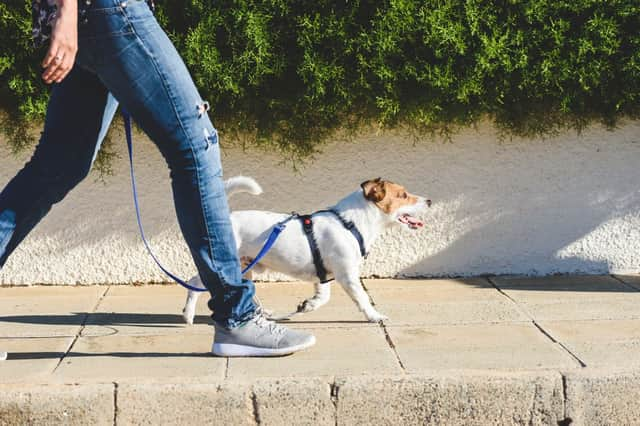Dog Road Safety: Here are 5 expert tips to avoid accidents when walking your dog on roads and pavement


Crossing the road carefully and avoiding collisions is just common sense to humans, we don’t give it a second thought - for dogs, however, it’s not that simple.
With this in mind, the Catrin George, animal wellbeing specialist at Animal Friends Pet Insurance, has outlined some top tips to help keep your dog safe near roads.
Advertisement
Hide AdAdvertisement
Hide AdShe explained: “There are several steps you can take to improve your dog’s road safety training if you are walking around roads and pathways. We all want our pets to be safe and it is best to be very careful near roads, whether they are quiet country lanes or busy carriageways.
“It takes a lot of constant practice, and you will need to be patient and provide regular praise for good behaviour. In the long run, investing time into your dog’s road safety training can be life-saving!”
Here's what she had to say.
Increase visibility
Whether you’re out walking on a dark and foggy winter evening or using a crowded pavement on a busy summer’s day, standing out and being seen is vital.
No matter the conditions, your dog should be on a lead at all times near a road, but kitting your dog in reflective gear (and making sure you wear some yourself) can also help keep them safe at any time of day or night.
Teach your dog to sit
Every owner knows the importance of training your dog to help build and strengthen your bond and foundation of trust, but helping them learn commands that support their safety is critical. Teaching your dog to sit when they approach a kerbside and not to cross the road without a specific command could really help increase your safety together. This should be done whenever you’re at a kerb, even if the road is clear and the dog is on a lead.
This way they will learn that they should never cross a road without your permission. However, you cannot fully rely on this and you should always be cautious near roads, whether they are quiet country lanes or busy highways.
Watch out for tunnel vision
Some dogs develop tunnel vision when they’re in hot pursuit of a ball or something else that’s caught their eye. Unfortunately, this can sometimes mean they are not fully aware of their surroundings.
If your dog has a high prey drive, make sure they are on the lead when they are close to any road. This includes when walking them in open parks bordered by roads, even if it’s quiet, you never know when they might spot something and give chase. When it comes to the wellbeing of our pets, it’s always better to be prepared.
Advertisement
Hide AdAdvertisement
Hide AdBe mindful of overexcitement
Even well-behaved dogs can lose control if they are extremely excited, which could be a risk if you’re near a road. Try to behave calmly, and discourage over-exuberant behaviour near roads and cars from the day you first bring your dog or puppy home. Make sure you’re keeping toys and balls out of sight near roads so they know it is not play time, and keep treats on hand to encourage and reward good, calm behaviour. This will teach them to approach these things with caution.
Be careful when exiting the car
When getting your dog in or out of the car for their walk, make sure their lead is securely fastened before opening the door and check that the road is clear. This will mean that if they unexpectedly jump out and into the road, especially if you are parked up on a kerb, you’re able to be in control of the situation and avoid any potential harm.
Comments
Want to join the conversation? Please or to comment on this article.